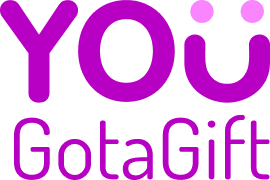Understanding employee motivation and satisfaction is crucial for improving productivity and retaining talent in the workplace. Motivated employees lead to higher engagement and increased productivity, while positive work environments reduce turnover rates. One way to accomplish this is by utilizing perks, benefits and rewards efficiently. Given in addition to employee salaries, these programs become powerful tools for employee happiness and success in the workplace. In this article, we’ll explore and define the differences between perks, benefits and rewards.
ماهي المُميزات؟
المُميزات الوظيفية هي بمثابة البهارات السرية التي تُرشّ على رواتب الموظفين، تمنحهم دفعة إضافية من السعادة والولاء تجاه الشركة. لا تنتظر أن تجدها مُفصلة في عقد العمل، فهي أشبه بـ الهدايا الرمزية التي تقدّمها الشركة لموظفيها لإشعارهم بأنهم أكثر من مجرد رقم،
-
- المُميزات الوظيفية تتخطى الماديات لتخلق واحة عمل مميزة تجذب المواهب وتحتفظ بها.
-
- يعد الإستثمار الذكي في مُميزات الموظفين يمثل الوصفة السحرية لتعزيز نجاح وحيوية مكان العمل حيث أظهرت الدراسات أن 62% من الموظفين يعتبرون المُميزات الوظيفية عاملًا مؤثرًا في رضاهم الوظيفي, بل إن 30% من المرشحين المحتملين قد يرفضون العروض الوظيفية التي لا تقدم أي مُميزات جذابة1
أمثلة على المميزات الوظيفية:

ماهي الفوائد؟
الفوائد هي شكل من أشكال التعويض الغير مالي للموظفين، فهي ركيزة أساسية لخلق بيئة عمل مُرضية ومُحفّزة. لتتجاوز آثارها الإيجابية أسوار المكتب لتشمل حياة الموظف الشخصية وصحته ورفاهيته، حيث تشير الدراسات الى أن أكثر من 73% من الموظفين يفضلون البقاء في الشركات التي تُقدّم لهم الفوائد1
-
- أهمية الفوائد تتجاوز بيئة العمل، فهي تساهم في تحقيق التوازن بين العمل والحياة الشخصية وتعزز صحة الموظفين ورفاهيتهم.
-
- تلعب الفوائد دورًا رئيسيًا في جذب المواهب الجديدة وخفض نسبة دوران الموظفين.
-
- إن الاستثمار في الفوائد ليس رفاهية، بل ضرورة لاستقطاب المواهب المميزة والحفاظ عليها لمساهمتها في زيادة الإنتاجية والأداء والولاء.
أمثلة على الفوائد الوظيفية:

ما هي المكافآت؟
Rewards are given to employees based on merit, accomplishments, as well as on personal and seasonal occasions. They can take various forms such as Gift Cards, monetary awards, professional development, ‘thank you’ letters, flexible work arrangements and more. According to a recent study, 41% of employees prefer a Gift Card as a reward, yet only 15% of them get one.2
-
- Rewards are extremely important because they help recognize, motivate and appreciate the workforce.
-
- تلعب المكافآت الفعَّالة دورًا مهمًا في رفع معنويات الموظفين، ويمكن أن ترفع الإنتاجية بنسبة 17%1.
-
- تُقلّل أبسط أشكال المكافآت من معدلات الدوران الوظيفي بنسبة تصل إلى 31%، وهذا يُبيّن لنا مدى أهمية الشعور بالتقدير في بيئات العمل2.
أمثلة على المكافآت:

الخصائص والاختلافات

على الرغم من اختلاف استخدام كل من المزايا و الــفــوائد و المكافآت عند التدقيق فيها، إلا أن جميعها تساهم في تحسين نفس الشيء، وهو سعادة الموظفين بشكل عام.
وعند استخدامها معًا بشكل صحيح، يمكن أن تكون أداة لا تُقدّر بثمن لـ زيادة الإنتاجية في مكان العمل.
أمثلة واقعية

المصادر:
1- https://shorturl.at/uDEP8
2- https://pages.blackhawknetwork.com/rs/922-CLG-920/images/infographic-employee_rewards_trends.pdf

